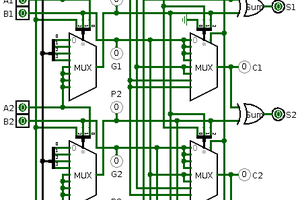FAQ
What is Mycroft?
Mycroft is a logic language with a syntax similar to PROLOG. It additionally has support for transparent distributed computing and composite truth values.
Why not just use PROLOG?
PROLOG, partly for historical reasons, is quite slow. It performs a depth-first search on the logic tree, in a single thread. Automatic memoization can't be used because determinate 'pure prolog' predicates can be freely mixed with indeterminate predicates like i/o and random number generation.
Mycroft has notation for whether or not predicates are determinate. It memoizes the results of determinate predicates, meaning that a determinate predicate will finish immediately the second time it's run. It memoizes intermediate results for determinate predicates, meaning that even an indeterminate predicate will run faster the second time it's run, if it depends upon determinate predicates. Additionally, a group of Mycroft instances can be formed into a cluster, wherein the results for any determinate predicates will be distributed to all instances, and the work of evaluating a predicate can be distributed across instances.
What are composite truth values?
A composite truth value is a concept borrowed from Probablistic Logic Networks, and consists of two components -- a percentage truth (or percentage likelihood of truth) and a percentage confidence. A truth value of 1 with a confidence value of 1 is 100% true with 100% confidence; a truth value of 0 with a confidence of 1 is false with 100% confidence; a truth value of 0.5 with a confidence of 0.75 indicates that the system is 75% sure that the predicate is 50% likely to be true (or is 75% sure that the predicate is 50% true).
Future plans
Eventually, I'd like this software to run reasonably well on the ESP8266 under NodeMCU. One of the reasons that logic languages failed back in the 80s is that even projects that attempted parallelism (such as the Japanese government's 5th Generation Computing initiative) attempted parallelism in a context of single large computers in a strictly ordered environment; however, running a distributed caching logic language on a network of $3 standalone wifi controllers means that someone can spend$60 and get a 20-node cluster that'll fit in their pocket, or embed multiple nodes in clothing and allow temporary networks to form whenever multiple nodes come within wifi range of each other.
 john.ohno
john.ohno

 Yann Guidon / YGDES
Yann Guidon / YGDES
 Al Williams
Al Williams
 Squonk42
Squonk42